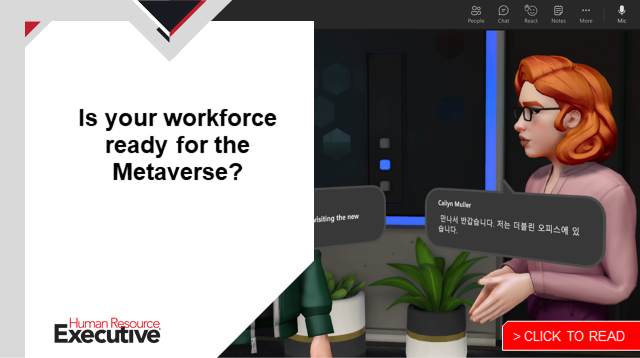The past two years haven’t been easy for anyone and the challenges have led many employees to seriously reconsider their career priorities. When companies returned to growth and ramped up hiring, employees suddenly had vastly more options. We shouldn’t have been surprised by the attrition that followed.
The narrative of the Great Resignation or Great Reshuffling is well-worn at this point and yet no less real. Voluntary attrition rates during early 2022 have remained high, and many companies are still struggling to adjust. There’s also a side of the Great Reshuffling that many are overlooking—and it involves the very people they are depending on to navigate the path forward.
HR teams have been at the center of responding to COVID, managing layoffs during the downturn (often including much of the HR team itself), and transitioning to hybrid work. Now HR is at the center of hiring and retention challenges, and it’s driving massive demand for talent—job postings for HR are up more than 130 percent compared to pre-COVID, a larger increase than even software engineers.
When we look back, I think we’ll consider the early 2020s as having been critical to elevating and reshaping the role of HR in many companies. For the people within HR teams, the last few years have provided an enormous amount of learning and growth but also led to significant burnout with both unique causes and solutions. With more demand for HR hiring than ever before, companies need to get ahead of an attrition wave of talent that they can’t afford to lose.
Why are HR teams hurting?
 HR was emotionally charged even during “normal” times (whatever those were). It’s deeply rewarding to support someone’s career growth or to be part of making a hybrid work model real. It’s painful to deal with some of the worst aspects of human behavior that have to be addressed. Sometimes it’s just draining being in the middle of pettiness that two fully grown humans should be able to figure out themselves.
HR was emotionally charged even during “normal” times (whatever those were). It’s deeply rewarding to support someone’s career growth or to be part of making a hybrid work model real. It’s painful to deal with some of the worst aspects of human behavior that have to be addressed. Sometimes it’s just draining being in the middle of pettiness that two fully grown humans should be able to figure out themselves.
The pandemic took things to a new level. People were justifiably worried about everything, from the state of the economy to their own finances; from the stability of the healthcare system to their own health and safety and that of their loved ones. Everything was uncertain and in the workplace that often meant that HR had to be a rock for everyone … for two years.
HR teams also had to shoulder new responsibilities they had never imagined, including becoming amateur epidemiologists and health experts, even as the science and government guidance shifted repeatedly.
All of this would have been challenging for robust and well-resourced HR teams. But here’s the thing: At the start of the pandemic, many companies aggressively cut their HR teams (and many others were under-resourced already). So HR teams have been navigating a once-in-a-lifetime crisis, bearing immense emotional weight and adopting new roles with fewer people than before.
It might be easy to brush over these stresses—in HR we are often the first to focus on the needs of everyone around us rather than ourselves. If you take the time to listen though, the message is clear. In our latest survey of over 700 HR professionals, after hiring, the most commonly cited challenges for HR teams are: being overwhelmed by work and burnout on the HR team. When asked what is driving that, 67% said recently increased workload, 45% said pandemic-related challenges, and 41% said staffing levels.
One 2020 survey found that 71% of HR professionals called 2020 the “most stressful year of their career.” That was understandable but felt temporary. Then in a more recent survey, HRE‘s What’s Keeping HR Up at Night?, 86% of HR professionals said 2021 was even worse. It’s at all levels, too. One well-known HR executive recruiter quipped on LinkedIn that “the most common job title in 2021 for a former chief people officer is ‘Sabbatical’.”
Related: What’s Keeping HR Up at Night? The Great Resignation and much more, HRE survey shows
 Unless organizations act quickly, they are facing a wave of HR resignation that threatens to compound all of their broader retention and hiring challenges. Here’s where to start:
Unless organizations act quickly, they are facing a wave of HR resignation that threatens to compound all of their broader retention and hiring challenges. Here’s where to start:
Re-build your resource-starved HR teams.
HR teams are deeply invested in helping their companies address the retention and burnout challenges they face. The irony, that the HR team is often stretched far beyond its own capacity, is not lost on them. When deciding whether to join or leave a company, HR investment is one of the major factors for most HR professionals.
Often companies will simplistically apply HR staffing or cost ratios they’ve seen, without considering the factors that drive resource needs. Organization size, rate of change, geographic dispersion, the competitiveness of labor markets and other factors can all drastically affect the people-related challenges an organization faces. Budgets are never unlimited, but they should also be linked to the outcomes that companies are expecting rather than pure cost-management approaches.
One of the other most common mistakes is timing—when companies wait until challenges are not only apparent but painful before redirecting resources. Particularly while in growth mode, this has major implications as HR teams are running to catch up rather than proactively leading change. This impacts not only HR but companies overall as they build up “organizational debt” just like they can build up technical debt.
Reinvesting in the function, after running so lean for so long, will position companies to come out ahead both in the broader Great Reshuffling as well as the competition for great HR talent.
Look after the mental health of your burned-out HR professionals.
 Early in my HR career, my company announced we were being acquired. Questions abounded and it seemed that everyone in the company needed to speak with us about something. Our HR leader took us aside that day and told us that the single most important thing we each needed to do right then was to “put on our own oxygen mask first.”
Early in my HR career, my company announced we were being acquired. Questions abounded and it seemed that everyone in the company needed to speak with us about something. Our HR leader took us aside that day and told us that the single most important thing we each needed to do right then was to “put on our own oxygen mask first.”
It was an acknowledgment that each of us in HR was also an employee, with our own anxieties, fears and challenges. Having that support and space was critical to supporting the rest of the company through the broad change.
That idea equally applies to the current moment. As we focus on mental health and burnout across the business, we need to acknowledge the individual needs within HR, too, and then operationalize this support. Can you set boundaries around response times or create better processes to manage around-the-clock requests? Can you invest in technology that automates the most time-intensive and manual work? Can you enable the team to actually take a vacation without being contacted as much as they encourage everyone else to do the same?
There’s a rising trend of HR leaders publicly taking sabbaticals or shifting into consulting roles with more control over their schedule and workload. These leaders are modeling the importance of taking care of yourself and taking time to recharge for the larger HR community; this will have a trickle-down effect where professionals at all levels will be looking for workplaces that embrace mental health, flexibility and the ability to set healthy workplace boundaries.
With a world of options available, the best place to start is often simply opening up the conversation to ask your HR team what would most help them.
Engage HR as a strategic partner.
Generic discussion about HR and having a “seat at the table” had gotten tiresome even before the pandemic. It’s undoubtedly critical, but it can ring just as true or hollow as endless statements that “employees are our most valuable asset.”
 When building the financial plan for this year, was HR part of determining compensation budgeting? If there’s a spike in attrition, are leaders open to discussions about true root causes, even when it’s hard to hear? Did they take it seriously if it was raised before the attrition increased? If there’s an acquisition, is HR engaged in due diligence and early integration planning or is it the last stage of inclusion for creating offer letters?
When building the financial plan for this year, was HR part of determining compensation budgeting? If there’s a spike in attrition, are leaders open to discussions about true root causes, even when it’s hard to hear? Did they take it seriously if it was raised before the attrition increased? If there’s an acquisition, is HR engaged in due diligence and early integration planning or is it the last stage of inclusion for creating offer letters?
Exactly what that partnership will look like is going to vary, but get specific and be open to changes.
Coming out as a winner in the Great HR Reshuffling won’t be like flicking on a light switch. It takes time to recruit and hire new HR employees. Strong support systems need a few months to gain traction. And elevating HR roles to strategic positions is more of an art than a science.
But the investment is worth it.
By studying the unique causes behind HR burnout, we can deliver support tailored to those in need. We can bring HR professionals back from the brink of burnout. We can safeguard our HR functions and equip our companies to tackle whatever comes next.
The post A Great HR Resignation is coming. Is your organization ready? appeared first on HR Executive.